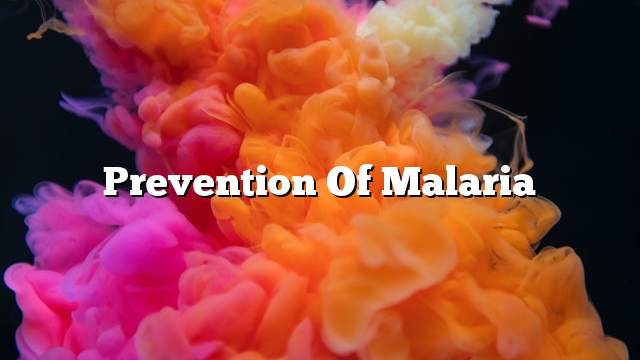People who want to go to areas where malaria is prevalent should receive advice against the disease and consist of:
1. Avoid mosquito bites by:
• Wear long clothing and cover most of the body, especially at night
• Use repellents for mosquitoes
• Sleep under a protective mesh
• Use insect-proof wire placed on windows
• Avoid dark clothing because it attracts mosquitoes
• Avoid using post-shave creams because they attract mosquitoes
2 – chemical prevention to take medicine before visiting the region a week and continue to 4 weeks after leaving the drug is preferred Chloroquine.
The medication used as a quack on the region and its response to and resistance to chloroquine is as follows:
• In high-response and low-resistance areas, chloroquine or proguanil is used
• In the medium-resistant areas, chloroquine and protogens are used
In high-resistance areas, mifelocaine, doxycycline, or malarone is used
Young children use chloroquine
1. Malaria is a common disease in tropical countries and is one of the leading causes of death in these areas.
2. The disease is caused by a parasite called plasmodium and needs an intermediary, a female Anopheles mosquito.
3 – Symptoms and signs of the disease is high fever and yellowing in the body and symptoms of anemia due to red blood cells explosion.
4 – Diagnosis of the disease after suspicion of the disease is by a picture of the blood of the patient.
5 – Prevention is better than treatment and is done by avoiding mosquitoes and drug prevention.
6 – treatment of the disease includes treatment for symptoms and signs and treatment against parasite
7. Misuse of anti-malarial drugs has led to increased host resistance
And thus to the increased risk of disease and deaths.
Oxford handbook of clinical medicine 8th edition
Dvidson’s principles and practice of medicine 21st edition
infoplease.com/cig/dangerous-diseases-epidemics/malaria.html
